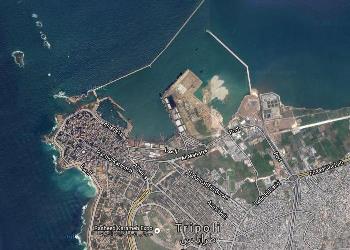About Port of Tripoli

The Port of Tripoli is the second port in Lebanon after the Port of Beirut. It has an approximate area of Three Million m2, with a water area of 2,200,000 m2, a land area of 320,000 m2, and a 420,000 m2 dump area adjacent to the current port, reserved for the futur Container Terminal and Free Market Zone. The Port currently has one dock and 8 berths with depths varying from 8 to 10 meters. The Port receives about 450 ships every year, averaging 37 ships per month. Most ships carry general goods and dry discharge such as iron, wood, sugar, various kinds of beans, iron scrap, vehicles, and construction material. The Port of Tripoli also contains a Free Zone with an area of 150,000 m2. The Port is currently undergoing expansion projects, where a new 600 m long berth is being built for container trade, with a rear zone area of 1,200,000 m2. This zone has been approved by the Lebanese Parliament as a free economical zone. The Port of Tripoli is independent both administratively and financially, and is governed by the General Code for Public Institutions according to decree no 4513. The Port is managed by a Board of Directors composed of 5 members elected for 3 years.
The Port of Tripoli has several characteristics mainly:
• The presence of a rear zone of an area reaching 1,200,000 m2.
• The building of a new berth that is 15 m deep and 600 m long in an initial phase, with an length expansion to 1200 m in a second phase.
• The presence of storage areas inside the Port, the Free Zone, and the Free Economical Zone.
• The availability of great areas near the port to build correlated dry ports.
• The location of the port only 30 km away from the border with Syria, and thus accessible to the Gulf and the Arab World.
• Low Taxes and Tariffs, and reduced fees for hired labor.


